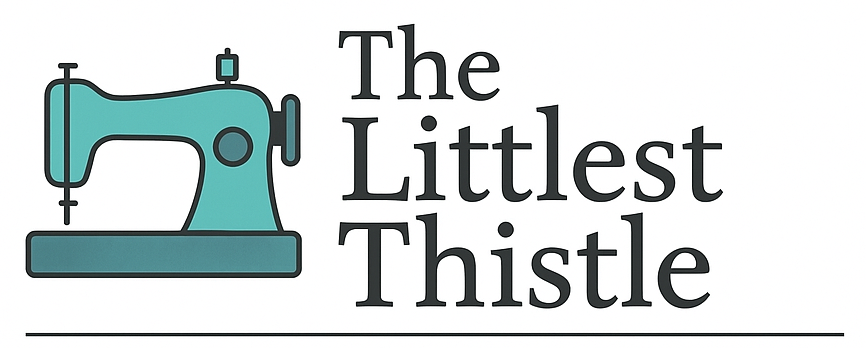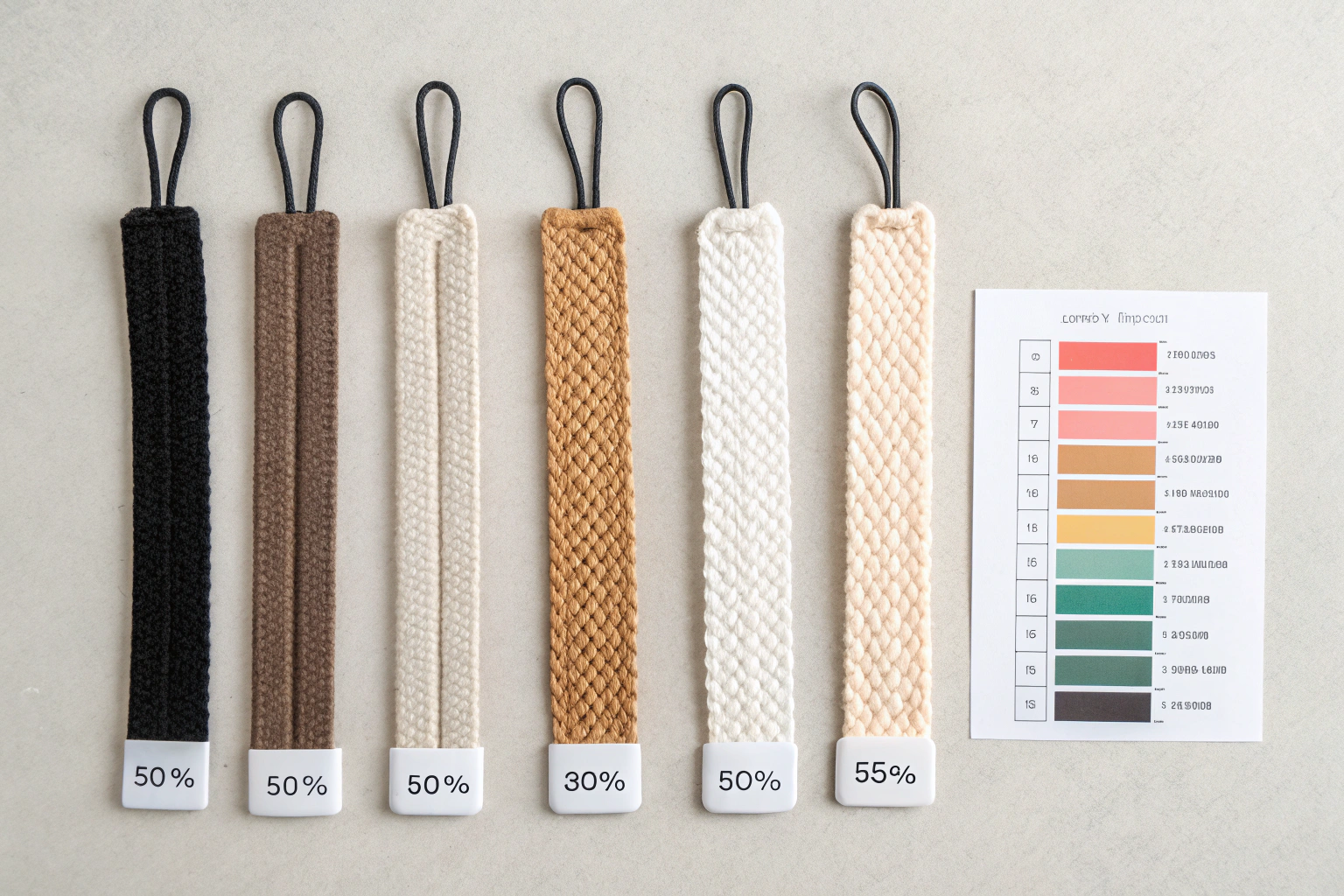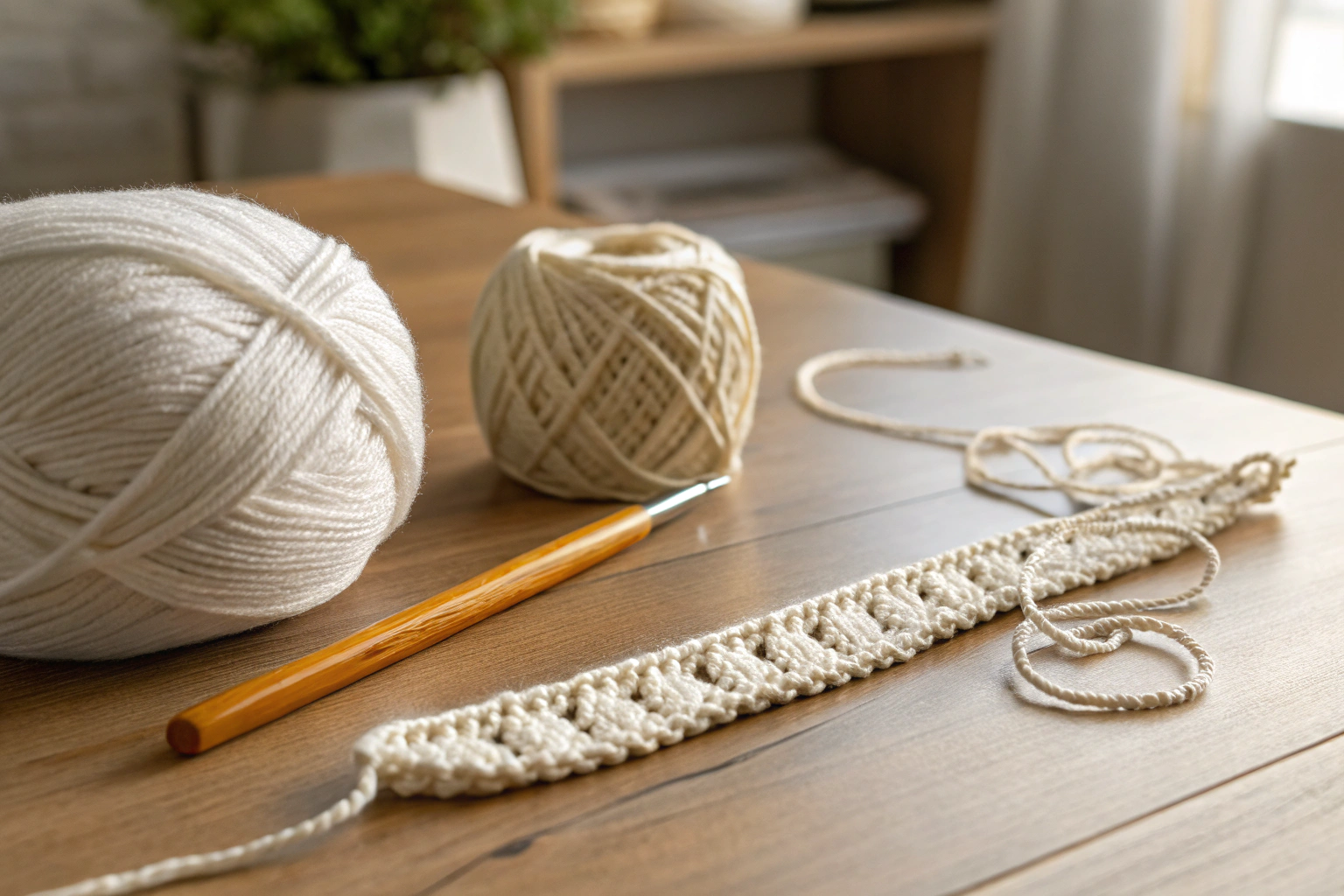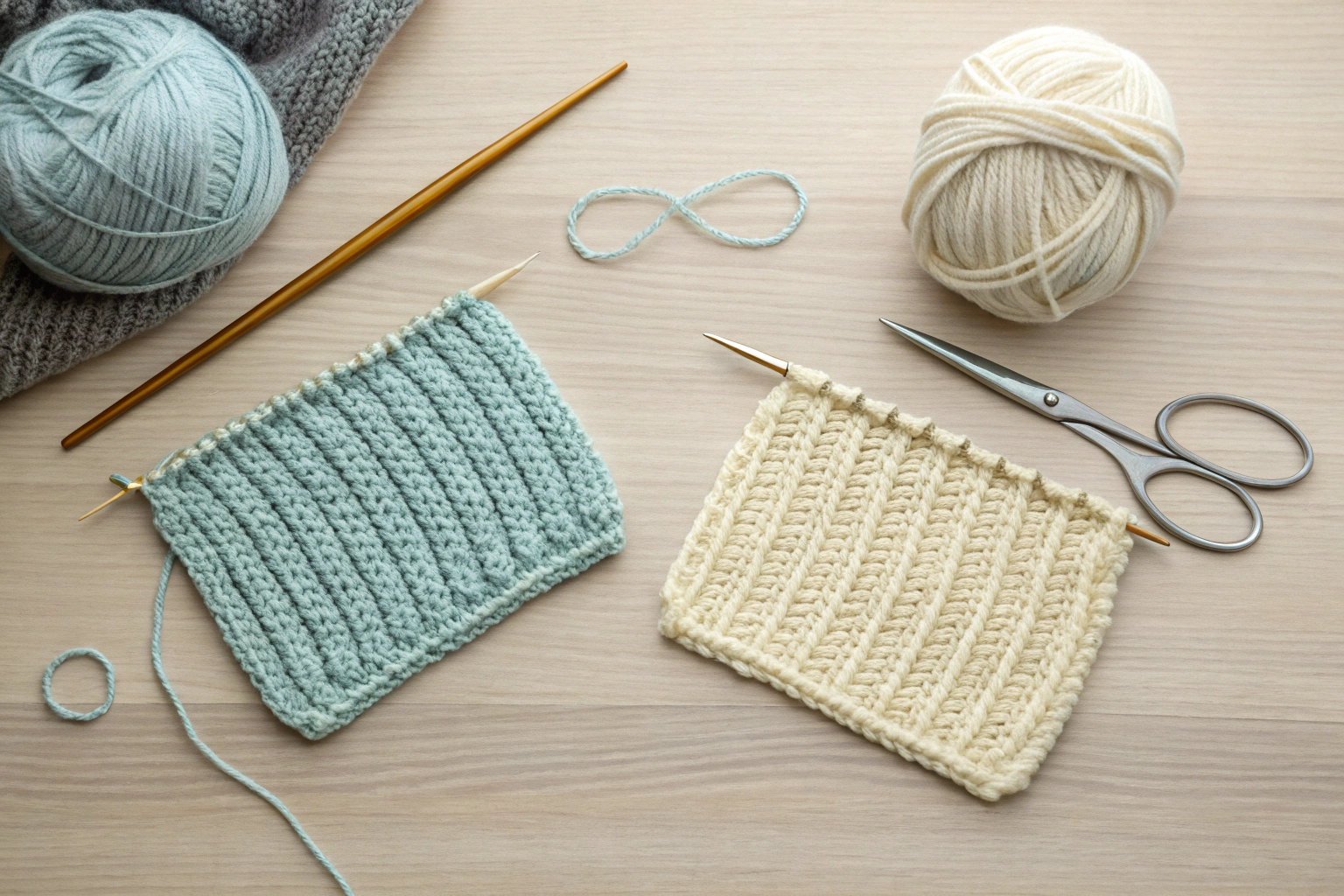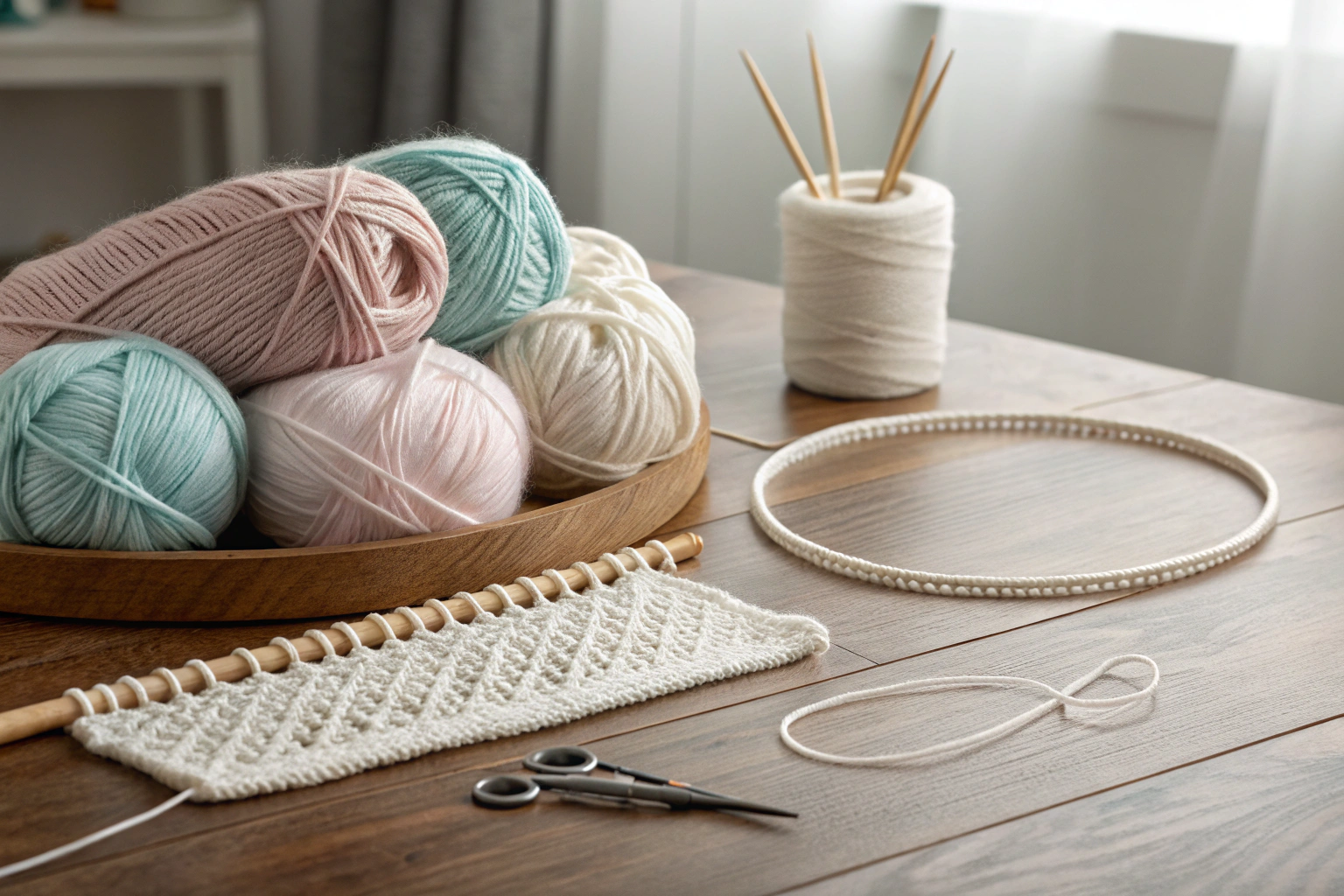Key Benefits at a Glance
- Ultimate Comfort & Flexibility: Creates comfortable, pull-on clothing that adapts to your body’s shape and movement without restrictive closures.
- Faster & Simpler Construction: Sewing an elastic waistband is significantly quicker and easier for beginners than installing a zipper or button placket.
- Achieve a Forgiving Fit: Allows for slight size variations, making it a perfect technique for children’s clothes or achieving a relaxed, casual style.
- Prevents Twisting & Rolling: Proper stitching techniques, like “stitching-in-the-ditch,” can secure the elastic to prevent it from annoyingly twisting inside the waistband casing.
- Professional & Durable Finish: Mastering this skill helps you create handmade garments that look polished and are sturdy enough for everyday wear and washing.
Purpose of this guide
This guide is for home sewers, DIY enthusiasts, and beginners looking to master a core sewing technique. It directly solves the problem of adding a secure, comfortable, and professional-looking waistband to handmade or altered garments. You will learn the entire process, from accurately measuring your waist and calculating the correct elastic length to creating a neat casing. We cover step-by-step instructions for threading the elastic, joining the ends cleanly, and topstitching it in place to guarantee it won’t twist or bunch up, helping you avoid common frustrations and achieve reliable, long-lasting results.Understanding Elastic Types and Selection
When it comes to creating comfortable, long-lasting elastic waistbands, understanding the different types of elastic available is crucial for success. After years of working with various elastic types, I’ve learned that each has its own personality and ideal applications. Braided elastic offers exceptional softness and comfort, making it my go-to choice for children’s clothing and lightweight garments where skin sensitivity is a concern. Knitted elastic provides superior stretch and recovery, perfect for activewear and garments that need to move with the body. Woven elastic delivers unmatched durability and structure, ideal for heavier fabrics and garments that see frequent wear. The selection process goes beyond just picking any elastic off the shelf. Clear elastic becomes nearly invisible when applied, making it perfect for sheer fabrics or when you want the elastic to disappear into the design. Drawcord elastic combines the comfort of elastic with the adjustability of a drawstring, offering versatility for casual wear. Through trial and error, I’ve discovered that choosing the wrong elastic type can lead to disappointing results—like the time I used delicate braided elastic on a heavy denim skirt, only to have it stretch out within weeks of wear.| Elastic Type | Stretch % | Best Uses | Pros | Cons |
|---|---|---|---|---|
| Braided | 50-75% | Lightweight garments, children’s clothing | Soft, comfortable | Less durable |
| Knitted | 100-150% | Activewear, swimwear | High stretch, recovery | Can roll |
| Woven | 25-50% | Heavy fabrics, structured garments | Very durable | Less comfortable |
| Clear | 75-100% | Sheer fabrics, invisible applications | Nearly invisible | Limited durability |
| Drawcord | Variable | Casual wear, adjustable fit | Adjustable | Bulkier appearance |
- Choose softer elastics for children’s sensitive skin
- Use wider elastics for heavier fabrics to distribute stress
- Pre-test elastic recovery before committing to a project
- Consider the garment’s intended lifespan when selecting elastic quality
How Wide Should Your Elastic Be?
Selecting the appropriate elastic width is as important as choosing the right type. The width directly affects both comfort and functionality of your finished waistband. My personal rule of thumb is to consider the fabric weight, garment style, and intended wearer when making this decision. For children’s lightweight pants, I typically use 1/2 to 3/4 inch elastic, which provides adequate support without creating bulk or discomfort. Adult garments require wider elastic—usually 3/4 to 1 inch for lightweight skirts and 1 to 1.5 inches for medium-weight pants. I learned this lesson the hard way when I used narrow 1/2-inch elastic on a pair of adult linen pants. The elastic cut into the wearer’s waist and created an unflattering silhouette. Now I always consider the proportional relationship between the garment and elastic width, ensuring the elastic can properly distribute the garment’s weight without digging in or rolling.- Children’s pants: 1/2 to 3/4 inch
- Adult skirts (lightweight): 3/4 to 1 inch
- Adult pants (medium weight): 1 to 1.5 inches
- Heavy fabrics/outerwear: 1.5 to 2 inches
- Delicate fabrics: 1/4 to 1/2 inch
Calculating the Perfect Elastic Length
Determining the correct elastic length requires more than just measuring the waist and subtracting a few inches. Through years of fitting different body types and working with various fabrics, I’ve developed a reliable formula that accounts for fabric characteristics and desired comfort level. The key is understanding that different fabrics require different reduction percentages from the actual waist measurement. For lightweight knits, I typically reduce the waist measurement by 10-15%, which allows the elastic to provide gentle support without being restrictive. Medium-weight fabrics require a 15-20% reduction, while heavy or structured fabrics need up to 25% reduction to accommodate their lack of stretch. The fabric’s own stretch properties also factor into this calculation—stretch fabrics require less elastic reduction than non-stretch materials.| Fabric Type | Reduction % | Example (30″ waist) |
|---|---|---|
| Lightweight knits | 10-15% | 25.5-27 inches |
| Medium weight fabrics | 15-20% | 24-25.5 inches |
| Heavy/structured fabrics | 20-25% | 22.5-24 inches |
| Stretch fabrics | 10-12% | 26.4-27 inches |
Pre-Stretching Elastic for Longevity
One of the most valuable techniques I’ve learned is pre-stretching elastic before incorporating it into garments. This simple step prevents the waistband from sagging and losing its shape over time. I discovered this technique after creating several garments that quickly became unwearable due to stretched-out waistbands. Pre-stretching removes the initial “give” that occurs during the first few wears, ensuring your finished garment maintains its intended fit throughout its lifespan.Essential Tools and Materials for Elastic Waistbands
Beyond just elastic and fabric, successful waistband construction requires specific tools that make the process smoother and more professional. Having sewn hundreds of elastic waistbands, I’ve identified which tools are absolutely essential versus those that are helpful but optional. Sharp fabric scissors are crucial for clean cuts that won’t fray, while a measuring tape ensures accuracy in both fabric and elastic measurements. Large safety pins are indispensable for threading elastic through casings without losing the end inside the fabric tunnel.Sharp fabric scissors ensure clean cuts on elastic and casing fabric—critical for preventing frayed edges that can snag or weaken your waistband: Best Scissors for Cutting Fabric.
My sewing machine setup includes a stretch needle to prevent skipped stitches when sewing over elastic, and I always use polyester or cotton-poly blend thread for its strength and slight stretch. A fabric marking pen helps me mark fold lines and stitching guides accurately, while a seam ripper stands ready for those inevitable corrections that come with perfecting technique.- Elastic (appropriate type and width)
- Sharp fabric scissors
- Measuring tape or ruler
- Safety pins (large)
- Fabric marking pen/chalk
- Sewing machine with stretch needle
- Thread (polyester or cotton-poly blend)
- Seam ripper (for corrections)
- Elastic guide foot (helpful but not essential)
- Rotary cutter and mat (for precise cutting)
- Bodkin or elastic threader (alternative to safety pin)
- Walking foot (for difficult fabrics)
Basic Fold-Over Elastic Waistband Technique
The fold-over method remains the most versatile and beginner-friendly approach to creating elastic waistbands. This technique works well for most garment types and provides a clean, professional finish that’s comfortable to wear. I’ve refined this method over years of teaching students and creating garments for clients, developing specific approaches that prevent common mistakes and ensure consistent results. The beauty of this technique lies in its simplicity and reliability. Unlike more complex methods, the fold-over waistband forgives minor measuring errors and adapts well to different fabric types. The key is maintaining consistent measurements and taking time with each step rather than rushing through the process. I’ve found that students who master this basic technique gain confidence to tackle more advanced waistband styles. Creating a successful fold-over waistband requires attention to detail at every step. From the initial measuring and marking to the final topstitching, each stage builds upon the previous one. The most critical aspects involve creating an appropriately sized casing and inserting the elastic without twisting—two areas where I see the most problems in student work.Before sewing, ensure your machine is properly threaded and set up for consistent stitching on stretch fabrics: How to Set Up a Sewing Machine.
- Measure and mark the waistband fold line
- Create the casing by folding and pressing
- Stitch the casing, leaving a 2-inch opening
- Insert elastic using safety pin method
- Join elastic ends with box stitch
- Close the casing opening
- Distribute gathers evenly
Creating a Clean and Properly Sized Casing
The casing serves as the foundation for your entire waistband, so getting it right is essential. I’ve learned that the casing width must provide enough room for the elastic to move freely without being so loose that the elastic twists or bunches. My standard formula adds 1/4 inch of ease to the elastic width, which accommodates the elastic thickness while allowing smooth movement during insertion and wear. Precision in pressing and stitching makes the difference between a professional-looking waistband and an amateur attempt. I always press my fold lines before stitching to ensure accuracy and use consistent seam allowances throughout the construction process. The placement of the casing opening also matters—I position it at a side seam where it will be less noticeable and easier to close invisibly later.“Pin the waistband to the garment, matching the side seams and the notches. We need to leave a 2-3″ (5-8 cm) gap in this seam for the insertion of the waistband elastic … Once we are sure the elastic is not twisted and we have both our ends pinched securely in our hand with the correct sides overlapping, we can pull the tails out so we have more room to sew them. It is really important to keep hold of your tails here so you don’t have to go back and check for twists again. At your machine, overlap the elastic by about 1″ (2.5 cm) and sew back and forth to secure. You can do a box stitch pattern here if you want to get fancy, but we just need there to be some lines of stitching to hold it in place.” — Helen’s Closet Patterns, June 2024
- Add 1/4 inch ease to elastic width for casing
- Press fold lines before stitching for accuracy
- Use consistent seam allowances throughout
- Mark casing opening placement before stitching
Inserting Elastic Without the Twist
The most frustrating aspect of elastic waistband construction is discovering twisted elastic inside the casing after you’ve closed it up. I’ve developed a foolproof method that eliminates this problem by maintaining control of the elastic throughout the insertion process. The key is working slowly and checking the elastic position frequently rather than rushing to complete the insertion. My technique involves securing both ends of the elastic before beginning insertion and maintaining visual contact with the elastic as much as possible. I attach a large safety pin to the leading end and pin the trailing end to the fabric outside the casing. This prevents the elastic from disappearing completely into the casing if something goes wrong during insertion.- Always secure the trailing end of elastic before insertion
- Keep elastic flat against the safety pin
- Work slowly through tight areas to prevent bunching
- Check for twists every few inches during insertion
Securing Elastic Ends: The Box Method
Joining elastic ends securely prevents the frustration of waistbands that come apart after a few wears. The box method creates multiple lines of stitching that distribute stress across the join, making it virtually impossible for the connection to fail. I learned to prefer this method after experiencing failures with simple overlapped seams that couldn’t withstand repeated stretching and washing. The box method involves overlapping the elastic ends by about an inch and stitching a rectangular pattern with an X through the center. This creates eight lines of stitching holding the join together, far more than necessary but providing peace of mind that the waistband won’t fail. The slight bulk created by the overlap disappears once the elastic is distributed around the waistband.Closing the Waistband Gap
After inserting and securing the elastic, you’ll need to close the opening left for elastic insertion. This step requires careful attention to maintain the professional appearance of your waistband. I’ve developed a technique that makes the closure nearly invisible by matching my stitching exactly to the original casing construction. The key is positioning your stitching precisely over the original seam line and using matching thread. I often hand-baste the opening closed first to ensure proper alignment before machine stitching. This extra step prevents catching the elastic in the closing stitches, which would create an uncomfortable bump and potentially damage the elastic.Topstitching Techniques for Professional Results
Topstitching transforms a basic elastic waistband into a polished, professional-looking finish. Beyond its aesthetic benefits, topstitching serves functional purposes by preventing the elastic from rolling and helping distribute the fabric gathers evenly around the waistband. The quality of your topstitching often determines whether your finished garment looks homemade or professionally constructed. Achieving consistent topstitching requires proper machine setup and technique. I use a slightly longer stitch length than for regular seaming and ensure my thread tension is balanced to prevent puckering. The stretch needle prevents skipped stitches when sewing through the elastic, while maintaining steady speed helps create even stitch spacing.Topstitching over elastic requires balanced thread tension to avoid puckering or skipped stitches. Learn how to fine-tune your settings for stretch fabrics: Thread Tension Guide.
The challenge of topstitching lies in managing both the elastic tension and fabric positioning simultaneously. I’ve learned to stretch the elastic gently while guiding the fabric to prevent waves or puckers in the finished stitching line. This coordination improves with practice, but even experienced sewers benefit from working slowly and maintaining focus throughout the process.- Set machine to straight stitch, medium length
- Use stretch needle and quality thread
- Mark stitching lines with removable marker
- Stretch elastic gently while stitching
- Maintain consistent speed and tension
- Backstitch at beginning and end
Single vs. Multiple Rows of Topstitching
The number and placement of topstitching rows affects both the appearance and functionality of your waistband. Single-row topstitching provides a clean, minimal look that works well for casual garments and children’s clothing. Double rows create a more structured appearance that’s appropriate for adult garments and pieces that will see frequent wear. I choose my topstitching pattern based on the garment’s intended use and style. Decorative multiple-row topstitching can transform a simple waistband into a design feature, but it requires more precision and time to execute properly. For everyday garments, I typically stick with one or two rows that provide good functionality without being overly complex.| Pattern | Appearance | Durability | Best For |
|---|---|---|---|
| Single row | Clean, minimal | Good | Casual wear, children’s clothes |
| Double row | Structured look | Excellent | Adult garments, frequent wear |
| Decorative | Fashion-forward | Variable | Statement pieces, special occasions |
Stabilizing Fabric While Topstitching
Maintaining proper fabric and elastic positioning during topstitching prevents wavy stitching lines and ensures even gather distribution. My technique involves using both hands to control the fabric—one hand stretches the elastic gently ahead of the needle while the other guides the fabric and maintains the stitching line alignment. The amount of stretch to apply varies depending on the elastic type and fabric weight. Too much stretch creates puckers when the elastic relaxes, while too little stretch results in loose, sloppy-looking topstitching. I’ve developed a feel for the right amount of tension through practice, but beginners should start with minimal stretch and gradually increase until they find the sweet spot for their specific combination of materials.Advanced Waistband Styles
Once you’ve mastered basic elastic waistband construction, exploring advanced techniques opens up exciting design possibilities. These methods build upon the fundamental skills while introducing new elements that can transform simple patterns into sophisticated garments. I’ve found that students who challenge themselves with these techniques often discover increased confidence in their overall sewing abilities. Advanced waistband styles allow for greater creativity and personalization in garment construction. They can turn a basic skirt or pair of pants into a unique fashion statement while maintaining the comfort and practicality of elastic waistbands. Each technique offers different aesthetic and functional benefits, making it important to choose the right method for each project.Tiered Elastic Waistband
The tiered waistband creates a distinctive gathered effect using multiple rows of elastic in separate channels. This technique works particularly well for full skirts and gathered tops where you want to emphasize the waistline while creating interesting visual texture. I’ve used this method successfully on both children’s and adult garments, adjusting the spacing and number of tiers based on the desired effect. Creating successful tiered waistbands requires careful planning of channel spacing and elastic selection. Each tier needs adequate space for its elastic while maintaining proportional relationships with the other tiers. I typically use narrower elastics for tiered applications to prevent excessive bulk while still achieving the desired gathering effect. The construction process involves creating multiple casings and inserting elastic into each one separately.Paperbag Elastic Waistband
The paperbag waistband combines the comfort of elastic with a fashionable gathered appearance that mimics traditional paper bag waist styling. This technique has gained popularity in recent years as a way to add vintage-inspired details to modern garments. I particularly enjoy using this method on skirts and wide-leg pants where the gathered effect enhances the garment’s overall silhouette.“To create a paperbag waistband for 1″ (2,5 cm) wide elastic, you’ll need to add 3 times the width of your elastic (3″), 3 times x 1/4″ of ease (3/4″), plus your usual seam allowance. … Use a large safety pin to pull the elastic through the casing. It’s sturdier and won’t open inside the casing messing up the whole process. … Secure your elastic by stitching through all layers in the side seams. This will prevent it from twisting in the future.” — Fabrics Store, January 2024
Exposed Elastic Waistband
Exposed elastic waistbands turn what’s traditionally hidden into a design feature. This technique works particularly well with decorative elastics or when you want to create a sporty, casual aesthetic. I’ve successfully used this method on activewear, casual skirts, and children’s clothing where the exposed elastic adds visual interest rather than detracting from the design. The key to successful exposed elastic applications lies in selecting appropriate elastic types and ensuring clean, finished edges where the elastic meets the fabric. I often choose contrasting elastic colors or decorative patterns that complement the garment’s overall design scheme. The construction method differs from traditional casings since the elastic is applied to the outside of the fabric rather than enclosed within it.Troubleshooting Common Elastic Waistband Issues
Even experienced sewers encounter problems with elastic waistbands, but understanding common issues and their solutions prevents minor setbacks from becoming major frustrations. I’ve dealt with every conceivable elastic waistband problem over the years, from twisted elastic to uneven gathering, and developed reliable methods for both prevention and correction. Most elastic waistband problems stem from rushing through the construction process or skipping important preparatory steps. Taking time to measure accurately, mark clearly, and work methodically prevents the majority of issues that plague elastic waistband construction. When problems do occur, addressing them promptly usually results in better outcomes than trying to work around them.- DO pre-stretch elastic before insertion
- DON’T skip marking quarter points
- DO use appropriate needle for fabric type
- DON’T rush the insertion process
- DO test stitch tension on scraps first
- DON’T ignore twisted elastic – fix immediately
Fixing Twisted Elastic in the Casing
Discovering twisted elastic after completing a waistband ranks among the most frustrating sewing experiences, but it’s not necessarily a project-ending problem. I’ve developed techniques for fixing twisted elastic without completely reconstructing the waistband, though prevention remains the better approach. The key is locating the twist precisely and creating minimal openings to access and correct it. My repair method involves carefully opening small sections of the casing seam to access the twisted elastic. Working slowly and methodically, I untwist the elastic and reposition it correctly before closing the opening with matching stitches. This approach works best when caught early, before extensive topstitching or finishing has been completed.- Locate the twist by feeling along the waistband
- Open a small section of casing near the twist
- Carefully untwist the elastic
- Re-secure the elastic in correct position
- Close the opening with matching stitches
Reviving Stretched-Out Elastic
When beloved garments develop stretched-out waistbands, replacement often proves more practical than attempting to revive the old elastic. I’ve successfully rehabilitated numerous garments by replacing worn elastic, breathing new life into pieces that would otherwise be unwearable. The process requires careful removal of the old elastic and installation of new elastic using the existing casing. Accessing the old elastic typically involves opening the original casing closure or creating a new opening if the original isn’t accessible. I use this opportunity to inspect the casing for wear and make any necessary repairs before installing the new elastic. The replacement process follows the same insertion and securing methods used in original construction.Addressing Uneven Gathering
Uneven gathering creates unflattering bunching in some areas while leaving others flat and stretched. This problem usually results from inadequate distribution of the fabric around the elastic during construction or finishing. I’ve learned to prevent uneven gathering by marking quarter points on both the elastic and fabric, ensuring equal distribution before final securing. When correcting uneven gathering in completed garments, I work systematically around the waistband, redistributing fabric gathers by hand and securing them with temporary stitches. Once the gathers are evenly distributed, I reinforce the adjustment with additional topstitching or hand stitches as appropriate for the garment style.Tips for Long-Lasting Elastic Waistbands
Creating durable elastic waistbands involves more than just construction technique—the care and maintenance practices you follow significantly impact their longevity. Through years of creating and caring for garments with elastic waistbands, I’ve identified specific practices that extend their useful life and maintain their appearance and function over time. Quality materials and careful construction provide the foundation for longevity, but proper care practices determine whether your elastic waistbands last months or years. Simple adjustments to washing, drying, and storage routines can dramatically improve the lifespan of elastic elements in your handmade garments. I’ve seen identical garments age very differently based solely on how they were cared for after construction.- Wash in cool water to preserve elastic
- Air dry when possible – heat damages elastic fibers
- Store garments folded rather than hung
- Replace elastic at first signs of stretching
- Use quality elastic for frequently worn items
- Avoid fabric softener – it breaks down elastic fibers
- Don’t over-stretch during construction
- Never iron directly over elastic
Conclusion: Your Path to Perfect Elastic Waistbands
Mastering elastic waistband construction opens up endless possibilities for creating comfortable, well-fitting garments that stand the test of time. The techniques covered in this guide represent years of refinement and learning from both successes and mistakes. Starting with basic fold-over waistbands and progressing to advanced techniques builds the confidence and skills needed to tackle any elastic waistband project. The journey from frustrated beginner to confident elastic waistband constructor requires patience and practice, but the rewards are substantial. Every perfectly gathered waistband, every smoothly inserted elastic, and every durably constructed casing builds your skills for future projects. I encourage you to start with simple applications and gradually challenge yourself with more complex techniques as your confidence grows. Remember, even experienced sewers continue learning with each project—embrace the process and enjoy creating comfortable, beautiful garments that reflect your growing expertise. For a detailed step-by-step guide, review the CDC sewing tips or consult the Sewing overview for broader background.Topstitching over elastic requires balanced thread tension to avoid puckering or skipped stitches. Learn how to fine-tune your settings for stretch fabrics: Thread Tension Guide.
Frequently Asked Questions
Start by learning how to measure waist for men accurately to cut the elastic 2-4 inches shorter than the measurement for a snug fit, using beginner sewing techniques. Fold the fabric to create a casing, insert the elastic with a safety pin, and sew the ends together before closing the opening with straight stitches. This handmade project is perfect for modifications like adding drawstrings for extra comfort.
Common methods include sewing a casing and threading elastic through it, or directly stitching elastic to the fabric for a gathered look, both starting with instructions on how to measure waist men to ensure proper sizing. For advanced sewing techniques, try exposed elastic or topstitched versions for a professional finishing touch. These approaches work well for various craft projects, from pants to skirts, allowing for easy handmade modifications.
To avoid twisting, first understand how to measure waist for men precisely and cut elastic accordingly, then secure it with pins or stitches at intervals while inserting into the casing. Use wide elastic for better stability and sew the ends flat before closing, incorporating beginner sewing techniques for a smooth finish. This tip enhances your handmade project, preventing common issues in waistband construction.
When following instructions on how to measure waist men, cut the elastic 2-4 inches shorter for light stretch or up to 6 inches for a tighter fit, depending on the fabric and desired comfort. This ensures the waistband gathers nicely without being too restrictive, a key step in sewing techniques for beginners. Adjust based on your project type for optimal handmade results.
After learning how to measure waist for men and inserting the elastic, stretch the waistband evenly and sew parallel lines along the top and bottom edges using a zigzag stitch for flexibility. This finishing technique prevents rolling and adds a polished look to your craft project. It’s ideal for modifications in handmade garments like joggers or shorts.
